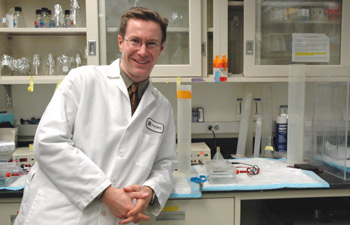Overcoming Toxicities Associated with Virus-Based Gene Therapy
By Jeffrey Laurence, M.D.
Research question
Using non-disease-causing viruses as vectors to carry pieces of genetic information encoding anti-HIV neutralizing antibodies or other anti-HIV genes is a significant part of certain HIV cure strategies.

One promising candidate is AAV, or adeno-associated virus, as it can efficiently target nerve cells in multiple species, from mice to humans. However, when used at high doses it may cause local or widespread nerve damage, at least when administered directly into the brain.
Findings
Dr. Keith Jerome, an amfAR-funded researcher with extensive experience using viral vectors in HIV cure strategies in monkeys, along with colleagues from the University of Washington, analyzed a recent Chinese study of AAV.
The Chinese group found that AAV can disrupt the protective layer of tissue between blood and brain, the “blood-brain barrier,” promoting immune cell infiltration into the brain in mice. The majority of those cells were CD8+ killer T cells, resulting in massive nerve cell loss at the site of AAV injection from 10 days to one month post-injection.
Dr. Jerome highlighted two important considerations. First, treatment of those mice with an antibody against T cells, or against Granzyme B, a toxic factor produced by those cells, suppressed nerve toxicity at the injection site. But nerve cell damage in the long term following AAV administration in the brain has not been studied, and the amount of virus required to induce nerve cell loss may be quite different in mouse, monkey, and human.
Impact
The authors note that “[g]enerally, AAV is considered to be safe” when used in gene therapy, and in HIV cure strategies AAV has not been directly injected into the brain. However, “it will be important to longitudinally monitor neurological behaviors of patients receiving intra-cranial AAV administrations as therapy.”
amfAR’s role
amfAR was a funder of this research.
Original article
http://www.ncbi.nlm.nih.gov/pubmed/37753219
Dr. Laurence is amfAR’s senior scientific consultant.
Share This:
